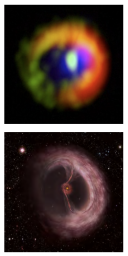
|
The Artscience of Planet Formation
The Art, Astronomy, Technology and Society (AATS) project is an artscience collaboration which dwells in the inbetweenness layer of scientific understanding of the origins of planets and the embodied, intuited ways of knowing. One of the oldest and at the same time one of the newest concerns of humanity is "How did the Earth and the planets come to be?". Planet formation, an intricate and potentially chaotic process, is also very efficient. Every star harbors at least one planet, as evidenced by the high frequency of exoplanet detections. Planet formation must therefore be a frequent process. Yet, learning about the origins of planets has been difficult. Here I share my experience in the AATS artscience project and discuss the nature of artscience collaborations.
|